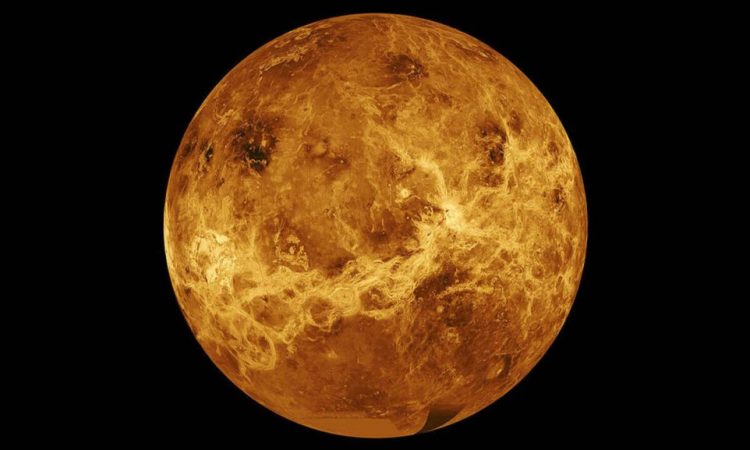
On March 1, 1982, the Soviet probe Venera 13 landed on the surface of Venus, thus sending the first color images, but not only that, it was also the first probe to record the sound of another world!
Venus is the second planet from the Sun and our closest planetary neighbor. Similar in structure and dimensions to rotates slowly in the opposite direction than most planets. Its dense atmosphere traps heat in a greenhouse effectmaking it the hottest planet in our solar system with surface temperatures high enough to melt lead. There are volcanoes and mountains. Venus is named after the Roman goddess of love and beauty, known as Aphrodite by the ancient Greeks.
Advertisement
Size, distance, orbit and rotation
With a radius of 6,052 kilometers, Venus is about the same size as Earth (slightly smaller). With an average distance of 108 million kilometers, it is 0.7 astronomical units away from the Sun. One astronomical unit (abbreviated to AU), is the distance from the Sun to the Earth (150 million kilometers). Sunlight takes 6 minutes to travel from the Sun to Venus. The rotation and orbit are unusual in several ways. Venus is one of only two planets (the other is ) which rotate from east to west (retrograde motion). Completes one rotation in 243 Earth days, the longest day of any planet in our solar systemeven longer than a whole year. But the Sun does not rise and set every “day” as it does on most other planets.
On Venus, a day-night cycle requires 117 Earth days because it rotates in the opposite direction to its orbital revolution around the Sun. It completes a complete orbit around the Sun (one year in Venusian times) in 225 Earth days or just under two Venusian day-night cycles. Its orbit around the Sun is the most circular of any planet, almost a perfect circle (the orbits of other planets are more elliptical). With an axial tilt of only 3 degrees, Venus rotates almost vertically and therefore it has no seasons.
Structure and training
Venus is in many ways similar to Earth in its structure. It has an iron core with a radius of approximately 3,200 kilometers. Above is a mantle made of hot rock that slowly churns due to the planet’s internal heat. The surface is a thin crust of rock that swells and moves as it the mantle shifts and creates volcanoes. When the solar system stabilized in its current configuration about 4.5 billion years ago, Venus formed when gravity pulled gas and dust together swirling until it forms.
Surface
From space, Venus is bright white because it is covered in clouds that reflect and scatter sunlight. On the surface, the rocks are different shades of greylike rocks on Earth, but the dense atmosphere filters the Sun’s light so that everything would look orange when you were on Venus. It has mountains, valleys and tens of thousands of volcanoes. The highest mountain on Venus, Maxwell Montesis 8.8 kilometers high, similar to the tallest mountain on Earth, Mount Everest. The landscape is dusty and surface temperatures reach 471 degrees Celsius. Venus has two large mountainous areas: Ishtar Terraabout the size of Australia, in the north polar region; And Aphrodite Terraabout the size of South America, straddling the equator and stretching nearly 10,000 kilometers. Venus is covered in craters, but none are smaller than 1.5-2 kilometers in diameter. The small meteoroids they burn in the dense atmosphereso only the large ones reach the surface and create impact craters.
Atmosphere e magnetosphere
The atmosphere of Venus is mainly made up from carbon dioxide, with clouds of sulfuric acid droplets. The thick atmosphere traps the Sun’s heat, resulting in surface temperatures above 470 degrees Celsius (there’s a scary greenhouse effect). The atmosphere has many layers with different temperatures. At the level where the clouds are located, about 48 kilometers from the surface, the temperature is more or less the same as the Earth’s surface. As Venus moves forward in its solar orbit and slowly rotates backward on its axis, the upper level of clouds whizzes around the planet every four Earth days, driven by winds traveling at around 360 kilometers per hour. Atmospheric lightning illuminates these fast-moving clouds. The speed inside the clouds decreases with height and is estimated to be only a few kilometers per hour on the surface. The atmosphere is so heavy that it would be like being 1.6 kilometers underwater (pressure 84 atmospheres). Even though Venus has an iron core similar in size to Earth, the magnetic field is much weaker than the terrestrial one due to its slow rotation.
References:

